In the rugged landscape of southern Utah, an unexpected aquatic wonderland awaits. Lake Powell, the massive reservoir formed by the flooding of Glen Canyon, offers recreation of all kinds amid red rock cliffs and desert vistas.
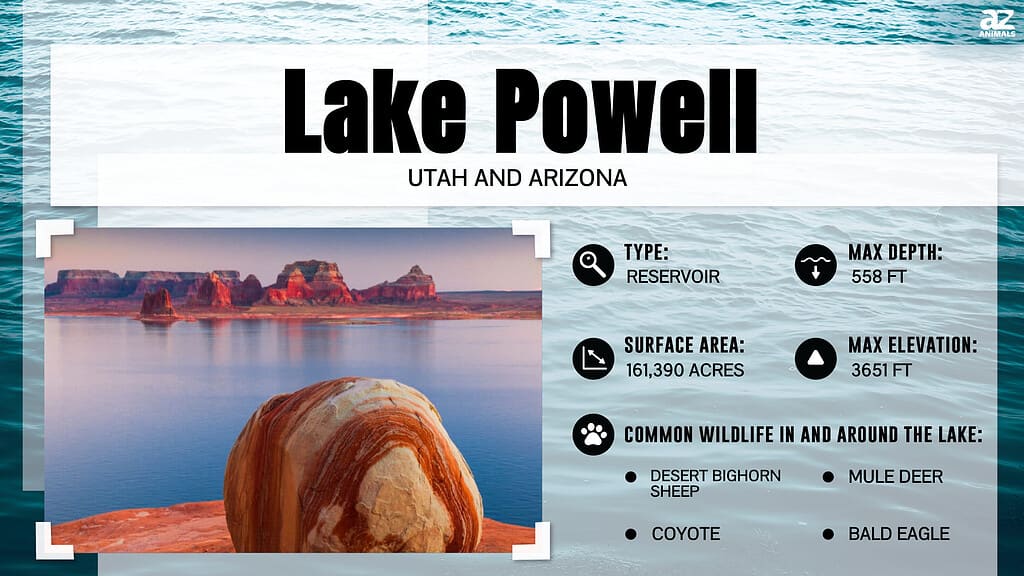
Now, let’s dive into more detail about the history and highlights of Lake Powell, the oldest artificial lake in Utah. Read on!
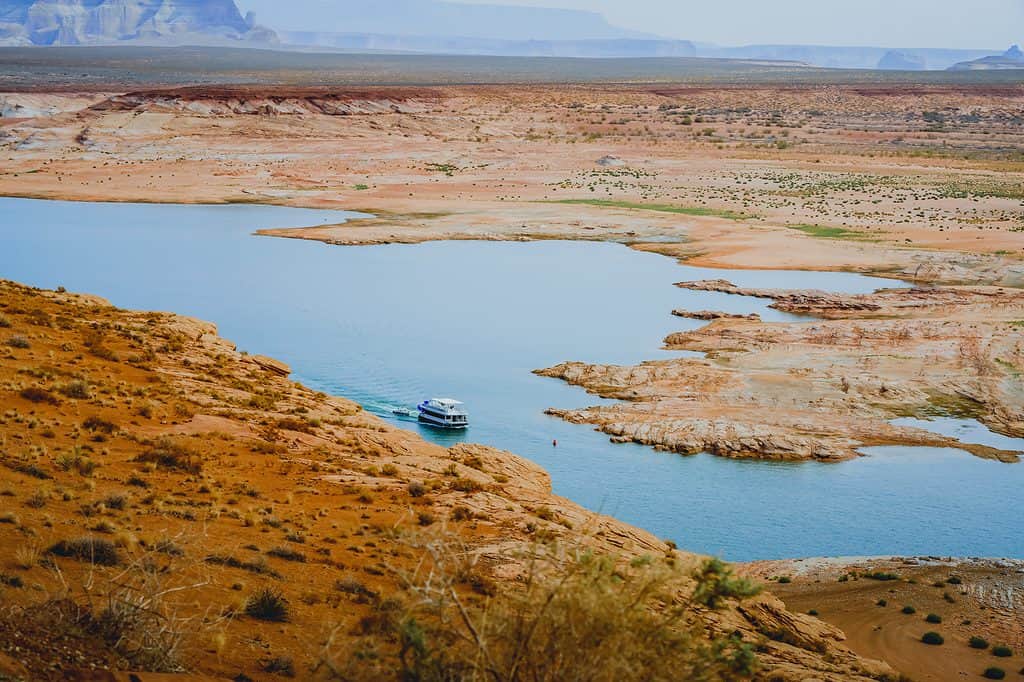
Lake Powell was formed in 1963.
©HannaTor/Shutterstock.com
A New Lake Flooded Among Ancient Stone
The oldest artificial lake in Utah was born in 1963 after the completion of one of the nation’s most contentious dams, Glen Canyon Dam. Built to store and harness the waters of the Colorado River, the 710-foot tall concrete arch dam took over five years to construct before the flooding could commence.
Conservationists heavily opposed the ambitious project, which would irrevocably alter the natural stone cathedrals of Glen Canyon. But proponents saw the dam as vital for water storage and hydroelectric power.
Once the flooding waters had reached their peak capacity decades later, a new 182-mile-long lake emerged with nearly 2,000 miles of winding shoreline. Lake Powell was named for the one-armed Civil War veteran John Wesley Powell who explored the nearby Grand Canyon by boat in 1869.
Though crafted by human hands, this massive desert lake now appears like a natural wonder among the layered sandstone cliffs. Defying its artificial origins, Lake Powell sustains a diversity of plants and wildlife uniquely adapted to the canyon country environment.
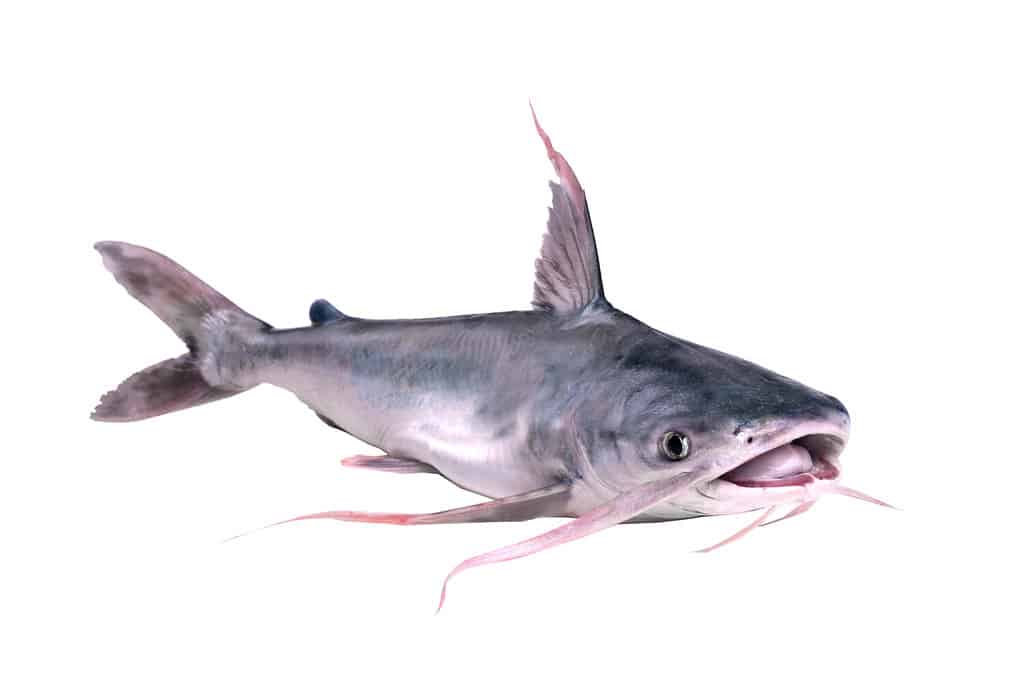
Catfish is one of the common species in Lake Powell.
©IrinaK/Shutterstock.com
Myriad Fish Species Cruising Azure Waters
From apex predators to tiny baitfish, Lake Powell teems with fish species perfectly suited to its clear waters and desert climate. Five game fish attract anglers from across the globe who come to reel in bucket-list trophies.
The striped bass is the most coveted catch, capable of growing over 20 pounds. These large silvery fish cruise open waters hunting for prey. Smallmouth and largemouth bass stalk the shorelines and coves, providing exciting light tackle fishing. Massive catfish lurk on lake bottoms, waiting for anglers’ baited hooks.
Two other popular sport fish are the walleye, recognizable by its glassy black eyes, and the crappie, boasting black splotches on its silver flanks. Anglers also catch yellow perch, sunfish, carp, and the mighty razorback sucker, an ancient endangered species from prehistoric times.
From game fish to tiny shiners, Lake Powell’s diversity results from its mix of river and lake habitats. Additionally, the reservoir’s depths offer the perfect environment for species to evolve and thrive.
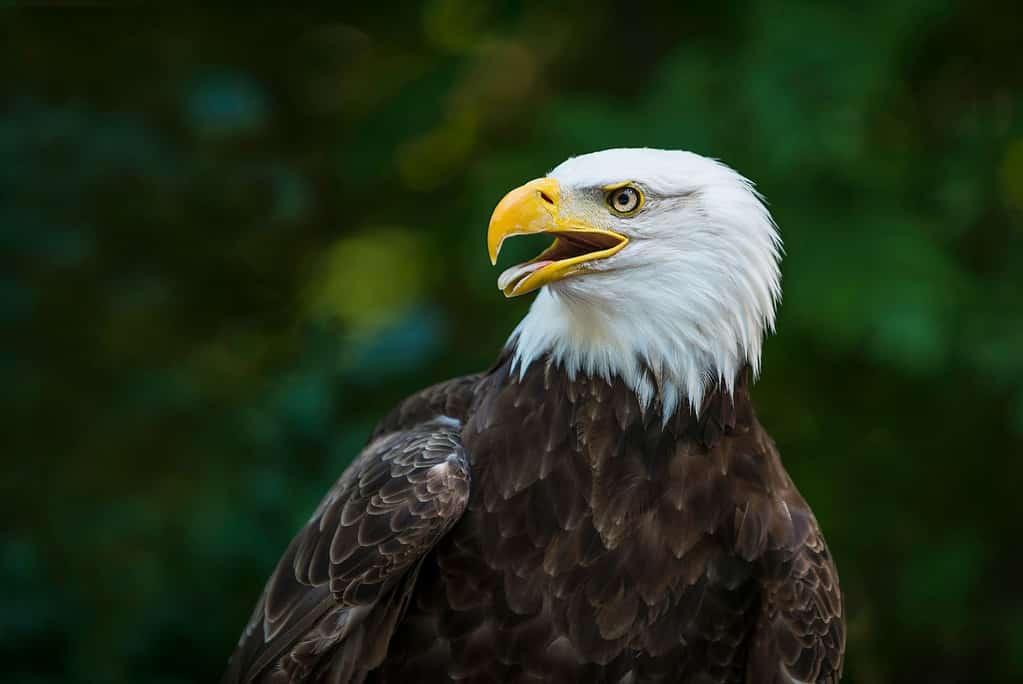
Bald eagles are frequently in the skies over Lake Powell.
©iStock.com/hsun337 – License
Wingéd Wonders Along Lakeside Cliffs
The sheer sandstone walls surrounding Lake Powell attract avian life of all feathers, from tiny hummingbirds buzzing through desert blooms to great white pelicans floating lazily over the glassy water. Over 300 species are home along the Lake Powell shoreline during migrations or year-round residence.
Belted kingfishers chatter their rattling call and dive like missiles for fish. Ospreys and bald eagles soar on thermal winds and survey the waters for unwitting prey. Great blue herons stalk the shallows on spindly legs while ducks and geese float tranquility across secluded coves.
Songbirds flit through riverside thickets of tamarisk and mesquite. Magnificent golden eagles and red-tailed hawks nest among rocky pinnacles and patrol the skies for ground squirrels and rabbits. The lake ecosystem supports all these winged creatures and more in a delicate balance.

A desert
tortoise
can sometimes be found at Lake Powell.
©Gchapel/Shutterstock.com
Ancient Desert Dwellers Adapted to the Waters
While Lake Powell seems an unlikely habitat for desert species, reptiles and mammals have adapted to make the most of this oasis in the parched landscape. Sandy beaches provide the perfect habitat for the desert tortoise while collared lizards scamper over sun-baked boulders.
Rattlesnakes slither along rocky trails, coiling to ambush mice and packrats. Chuckwallas and Gila monsters lounge in crevices, emerging to feed. Nearby cliffs and caves harbor ring-tailed cats, bobcats, foxes, and mule deer venturing to the lake for water. Bighorn sheep leap sure-footed along precipitous canyon walls.
This unlikely diversity results from Lake Powell’s location at the intersection of four desert ecosystems. Plants and animals from the Sonoran, Mojave, Great Basin, and Colorado Plateau mingle in this unique habitat. Additionally, the reservoir bridges these regions to sustain life.
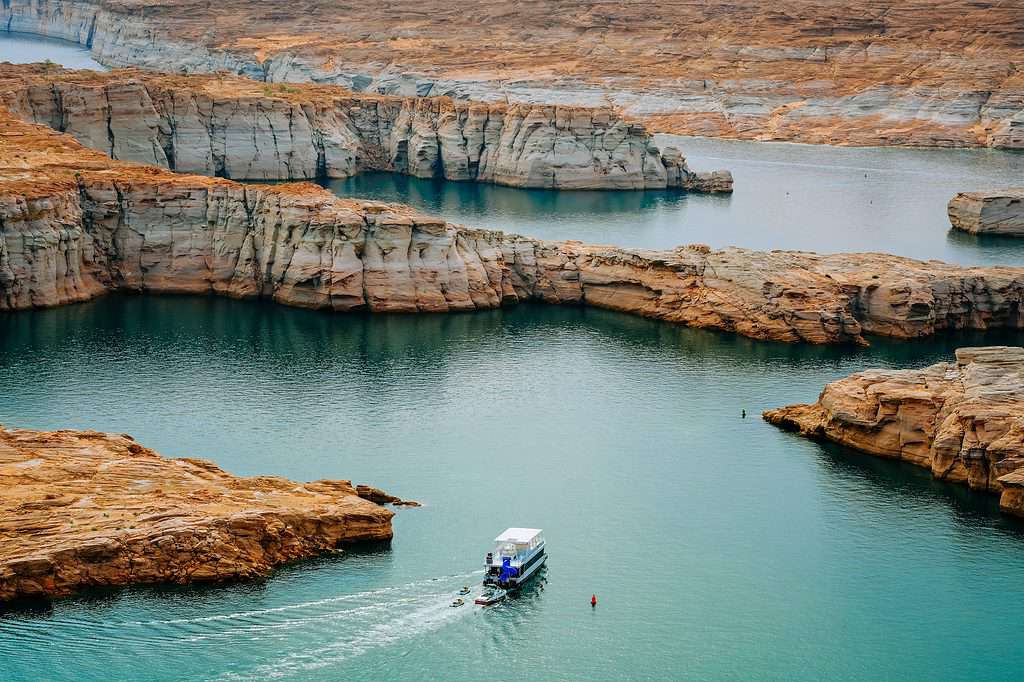
Going on a boat ride is one of the fun adventures on Lake Powell.
©HannaTor/Shutterstock.com
Myriad Adventures Await Across this Desert Playground
Lake Powell , the oldest artificial lake in Utah, provides endless opportunities for recreation and exploration within its many flooded canyons, coves, and open waters. Adventures await across every mile of thirsty red rock landscape:
Houseboating – Float for days on houseboat vacations with all the comforts of home on deck. Explore narrow canyons only accessible by water. The lake has nearly 2,000 miles of shoreline to explore, with countless hidden gems awaiting discovery.
Kayaking – Paddle through flooded slot canyons like Antelope Canyon on guided tours to see swirling sandstone up close.
Jet Skiing – Launch your watercraft to zip across glassy open water surrounded by deep red cliffs.
Paddleboarding – Test your balance standing atop a board while paddling across calm blue waters, taking in expansive views.
Fishing – Cast from rocky banks or rent boats to reel in massive lake dwellers of various species.
Hiking – Lace up hiking boots to explore scenic trails along the shore and high above, ending at secluded beaches.
Camping – Pitch a tent beside the lake and fall asleep to lapping waves.
With so many ways to explore Lake Powell, visitors return again and again to play across this desert oasis and discover hidden gems among sun-washed canyons.
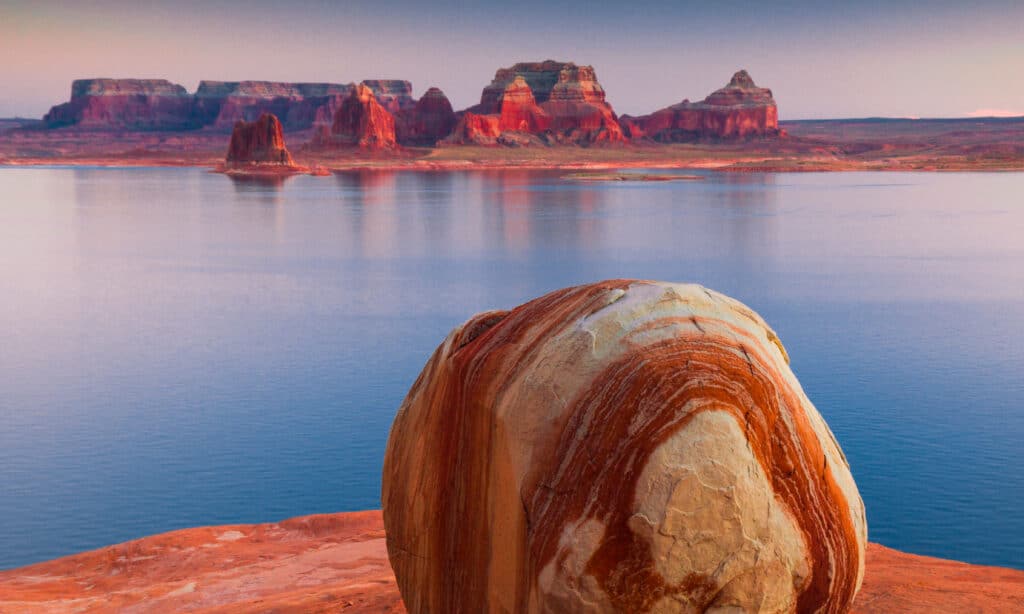
You can find many unique geological formations at Lake Powell.
©iStock.com/Lucas Cometto
Lake Powell’s Unique Geologic Features
While Lake Powell itself may be artificial, the stunning geologic formations surrounding the reservoir developed over millions of years as natural forces shaped the landscape. Several unique geologic features stand out:
The Navajo Sandstone cliffs surrounding Lake Powell showcase over 200 million years of shifting desert sands turned to stone. Patterns emerge in the layered red and white rock revealing the ancient history. This stone makes the sheer walls and soaring pinnacles distinctive from the lake’s scenery.
Slot canyons like Antelope Canyon formed as water-carved narrow, winding paths deep within the porous sandstone over millennia. The smooth, swirling walls appear sculpted by hand and glow in undulating shades of orange and red when hit by sunlight. Kayaking into these canyons offers an up-close view.
Natural arches and bridges decorate the landscape, like the majestic Rainbow Bridge standing 290 feet tall over a narrow gorge. These form where softer rock erodes underneath the harder surface layer. Rainbow Bridge appears almost supernatural, rising from the water.
Fossils and petroglyphs also emerge in the Navajo Sandstone, evidence of dinosaurs and early Native Americans who once inhabited the region. Every natural feature around Lake Powell contains the Southwest landscape’s long history.
With such diverse and unique geology, Lake Powell showcases the canyons and stones of the Colorado Plateau region on grand display. The reservoir utilizes nature’s creations as its stunning backdrop.
An Aquatic Wonderland in the Desert
In just over 50 years, Lake Powell has become a top attraction luring adventure seekers, nature lovers, and water sports enthusiasts to play and unwind along its red rock shores. Formed amid contention, this massive reservoir also sustains a diversity of life and recreation unmatched across the Southwest. Visitors continue returning to immerse themselves in Lake Powell’s otherworldly beauty.
Where Is Lake Powell Located on a Map?
Lake Powell is on the Colorado River. It starts at Glen Canyon Dam near Page, Arizona, then crosses the border into Utah. Page and the dam can be accessed via US 89. Lake Powell is 293 miles from Lake Mead, also on the Colorado River, 309 miles from Las Vegas, and 204 miles from Flagstaff. Closer are two of the national parks in Utah: Zion is 153 miles away, and Bryce Canyon is 188 miles away.
The photo featured at the top of this post is © HannaTor/Shutterstock.com
Thank you for reading! Have some feedback for us? Contact the AZ Animals editorial team.







